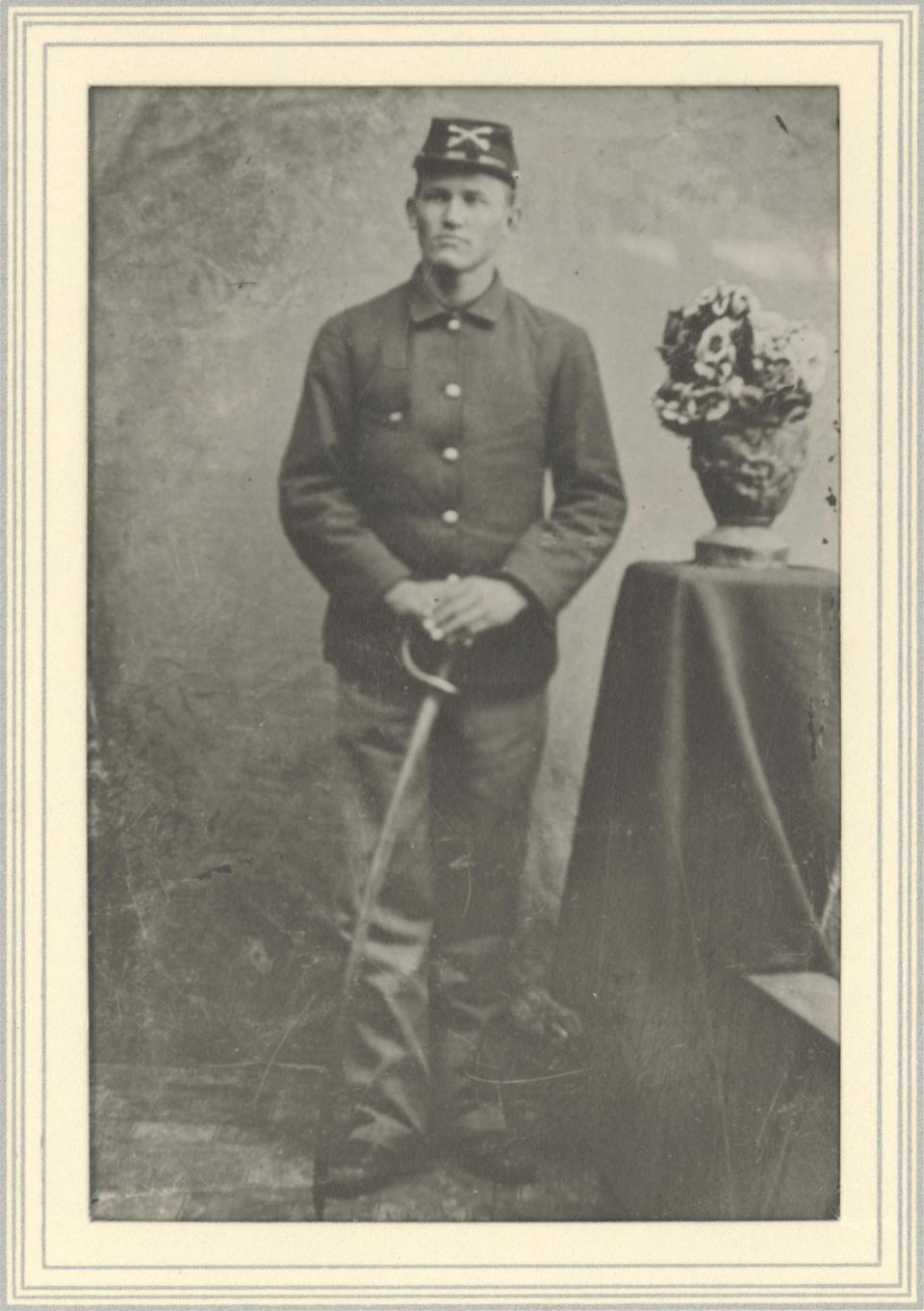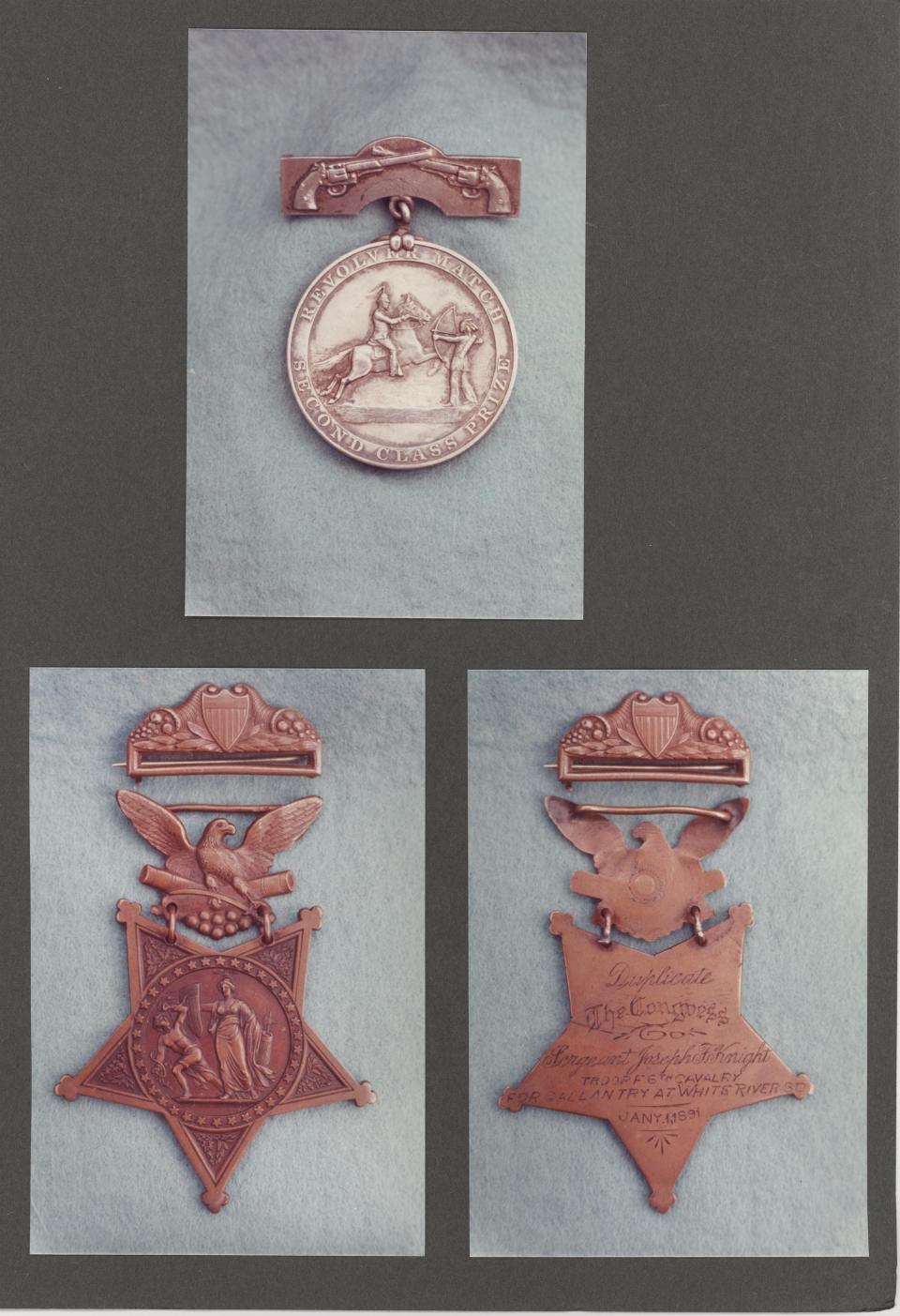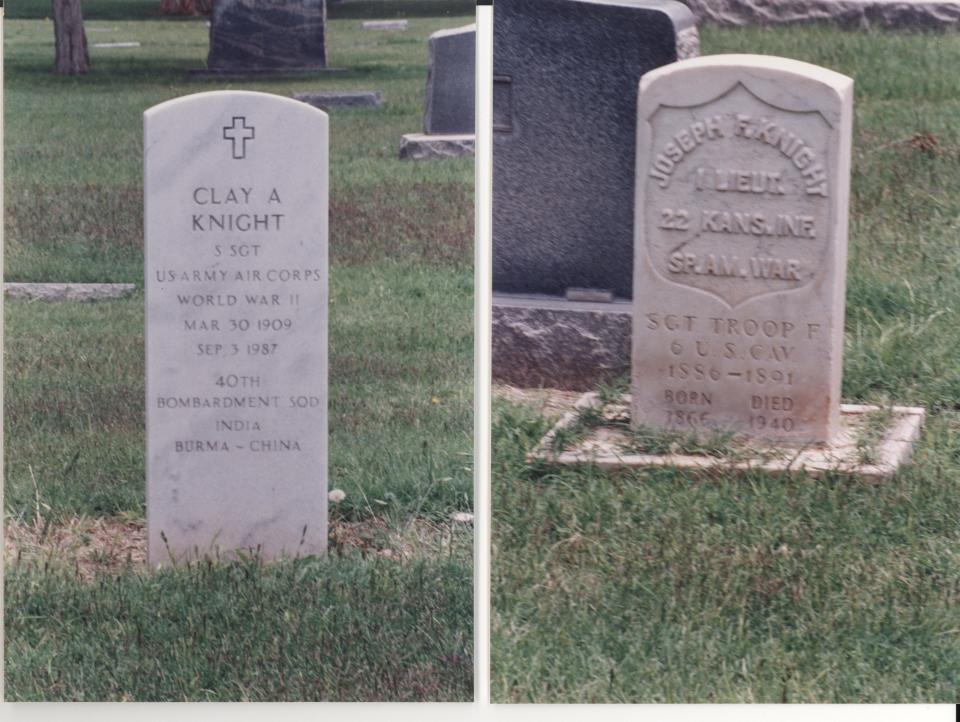Caprock Chronicles: Joseph F. Knight, Medal of Honor recipient
Editors Note: Caprock Chronicles are edited each week by Jack Becker, Librarian Emeritus, TTU Libraries. He can be reached at jack.becker@ttu.edu. Today’s article is by frequent contributor, Sally Abbe a member of the Historical Commission. This is her second Caprock Chronicle article on a Medal of Horon recipient.
The newspaper headline on his 1940 obituary, "Spanish American War Veteran Dead,” offers only a tiny glimpse into Joseph F. Knight’s military past. It would be 49 years before his valor was publicly recognized.

Joseph F. Knight was born in Illinois in 1864 and grew up in Kansas. In 1883, he “went west” and worked on ranches until he enlisted in the U.S. Army in March 1886. In the handwritten account of his military career, Knight says “I enlisted for the Apache Indian campaign.”
Knight was assigned to Troop F of the 6th Cavalry in New Mexico. After Geronimo was captured in September 1886, effectively ending the Apache Wars, Troop F served in various stations across New Mexico and Colorado.
In 1887, Troop F was sent to Rio Arriba, New Mexico, to remove “squatters” from the Jicarilla Apache Reservation. Knight noted that “the job clearing the reservation was a disagreeable unpleasant one as some of the heads of families had been born and raised right there on the reservation” after the Apache had been relocated to southern New Mexico. “But orders were orders” and Troop F removed the Hispanic occupants so the Apache could return.
Eventually Troop F and the rest of the 6th Cavalry was sent to South Dakota. In 1890-91 they took part in a campaign against the Sioux, commonly known as the Ghost Dance Wars.
The following is Sgt. Knight’s handwritten account of the events of Jan. 1, 1891: “In a skirmish that the 6th had with Chief Running Elk …I was in charge of the skirmish line that was sent out in front of the Regiment to feel for Indians. When the skirmish line came onto the Indians there was about 35 of them against my 12 and we were in a position where we could not fall back as we had forded White Clay Creek. My skirmishers were mounted, of course, and so were the Indians. The Indians did not come right toward us, but seemed to be trying to get to our left flank. When the Indians commenced firing at us we dismounted right quick and got flat on the ground and returned the fire but we had to shoot through the pony to hit the Indians. They was hanging onto the right side of their ponies and shooting from there. However, when we got an Indian down it took two more Indians to get the ones that was hit off the field. Us skirmishers did some mighty fine shooting for twenty or thirty minutes. We commenced firing at 700 yards. That was the elevation we had on our carbines and when the Indians got up to about 200 yards, there was only three left. We got one of them. The other two took him away. Right then General Car came to our rescue with the Regiment and that part of it was over.

“Troop K under Captain Kerr had to return to the base camp on White Clay River to get supplies and the Indians were after K Troop which had gone to corral about three-quarters of a mile to our right and had entrenched themselves. We rescued K Troop and the Indians that had K Troop besieged got away mighty quick when they saw the 6th Cavalry coming on the field. I was awarded a Medal of Honor for my part in that skirmish.”
His Medal of Honor Citation credits Knight’s actions in saving K Troop more forcefully, reading: “For extraordinary heroism on 1 January 1891, while serving with Troop F, 6th U.S. Cavalry, in action at White River, South Dakota. Sergeant Knight led the advance in a spirited movement to the assistance of Troop K, 6th U.S. Cavalry.”
His was one of seven Medals of Honor awarded that day at White River, South Dakota, awarded according to the standards at that time: “soldiers who distinguish themselves by their gallantry in action, and other soldier-like qualities.”

Knight was discharged as Sergeant, March 21, 1891, at Fort Niobrara, Nebraska, but joined the Kansas Volunteer Infantry. In 1898, he served the Volunteers as first lieutenant, hence the Spanish-American War service noted in his obituary.
He later moved from Kansas to New Mexico, and to Lubbock a few years before his death in 1940, at aged 76. His obituary in the Lubbock newspaper made no notice of his Medal of Honor award, nor did his military issued gravestone.
Knight’s Medal of Honor was not recognized locally until much later. A former FBI agent from San Antonio, Jim Kenney, dedicated his retirement to locating the graves of Medal of Honor recipients. He arranged for Knight’s headstone from the government, which was unveiled on Memorial Day, 1989. In 2013, Sgt. Knight was recognized along with two others on a plaque memorializing all three Medal of Honor recipients in the City of Lubbock Cemetery.
This article originally appeared on Lubbock Avalanche-Journal: Caprock Chronicles: Joseph F. Knight, Medal of Honor recipient

